The Schuylkill River flows 137 miles from its headwaters in the Appalachian Mountains to meet the Delaware at Philadelphia. It’s a river that serves as both a resource and a fluid chronicle, constantly intersecting the history of this land.
The Lenape people lived along the Schuylkill River for more than 10,000 years. The furnaces along its banks armed soldiers, its largest city held the spirit of the American Revolution, and the coal from its hills fueled industrial revolution. All the while, animals were using it as a corridor for migration, as they continue to still.
Today, the Schuylkill is treasured for its miles of river recreation in the backyard of more than three million people and its indispensable role in our past. So much so the U.S. Congress deemed the entire valley a National Heritage Area, with three national park sites within. Simultaneously environmental efforts continue to revitalize the river from the industrial purposes it has served.
Paddlers have the closest view of the Schuylkill’s ebbing role, floating the waters firsthand. And there is no better way to experience all the Schuylkill holds in store than by joining the 25th annual Schuylkill River Sojourn.
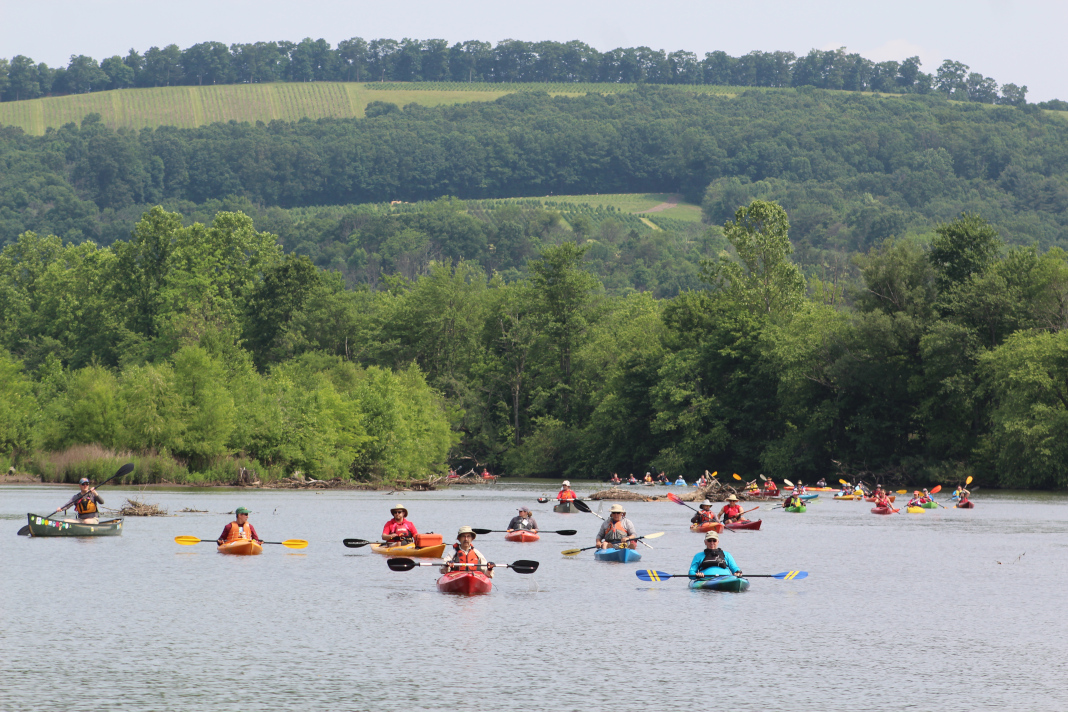
Joining Along On The Schuylkill River Sojourn
The Schuylkill River Sojourn is a weeklong guided outing from near the river’s beginnings in Schuylkill Haven to near its confluence with the Delaware in Philadelphia. The Sojourn, hosted by Schuylkill River Greenways, utilizes a public water trail established by the association and the access points they’ve helped provide along the way.
Schuylkill River Greenways (SRG) first hosted the Sojourn in 1999, when the state of Pennsylvania named the Schuylkill “River of the Year.” The organization decided there was no better way to celebrate than by taking a trip to show it off. Now that trip has been running for a quarter-century.
The Sojourn is about more than seeing the river, though. At lunch breaks and overnight stay locations, paddlers can partake in programs to better understand the river and connect with the communities who call the Schuylkill home.
Not everyone can take a week to be on river time with the Sojourn flotilla, however, and that’s fine by the SRG. The planned itinerary allows canoeists, kayakers and paddleboarders to hop on and enjoy any of the 14- to 18-mile day sections.
Whether you are making camp for the week or joining for a day, there are countless extraordinary experiences you’ll only find on a trip down this Pennsylvania stream. Here are seven you can experience on each section by joining the 2023 Schuylkill River Sojourn.
7 Experiences You’ll Only Find On The Schuylkill River
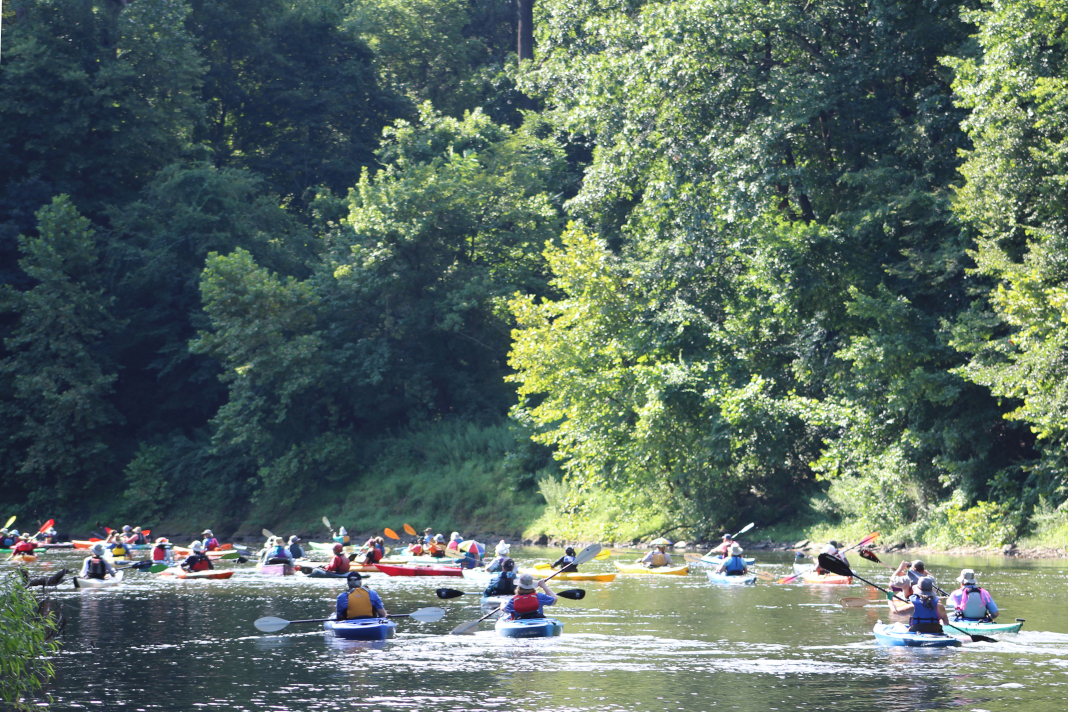
1. Enjoy The River’s Most Undeveloped Stretches Below Schuylkill Haven
The main stem and Little Schuylkill River converge in Schuylkill Haven, and this is where the water trail and the Sojourn begin. It’s a fitting section to start the story of the Schuylkill. Upstream the small streams drain the wetlands of the mountains where coal mining once proliferated.
Downstream of Schuylkill Haven, the river takes a wild turn through some of its most undeveloped corridors remaining. Over the next 15 miles flowing toward Port Clinton, the river is largely surrounded by forested lands, similar to how much of it would have appeared a few hundred years ago—a reminder of the decades-long environmental work ongoing to restore the natural value of the Schuylkill.
2. Watch Raptors Soar Above Schuylkill Gap
Impressive birds of prey migrate up and down the continent every spring and fall, and the Schuylkill River has a front row seat to one of the largest concentrations of raptor traffic in the Western Hemisphere.
The long-running ridges of the Appalachian Mountains provide uplifts of air and rising thermal currents for vultures, bald eagles and a dozen types of hawks an Audubon member could rattle off. A testament to this is nearby Hawk Mountain Sanctuary, a research center tasked with studying passing raptors.
As paddlers go downstream from Port Clinton, they exit the Schuylkill Gap and the eastern flank of the 185-mile-long Kittatinny Ridge. The east side of the monstrous Appalachian landform drops off to a sprawling valley, creating the perfect conditions for the traveling raptors to cruise with little effort. The fall and spring migrations are peak traffic for hawk watching, but even on a summer day, you’ll spot plenty of vultures or an eagle circling and soaring along the ridge.
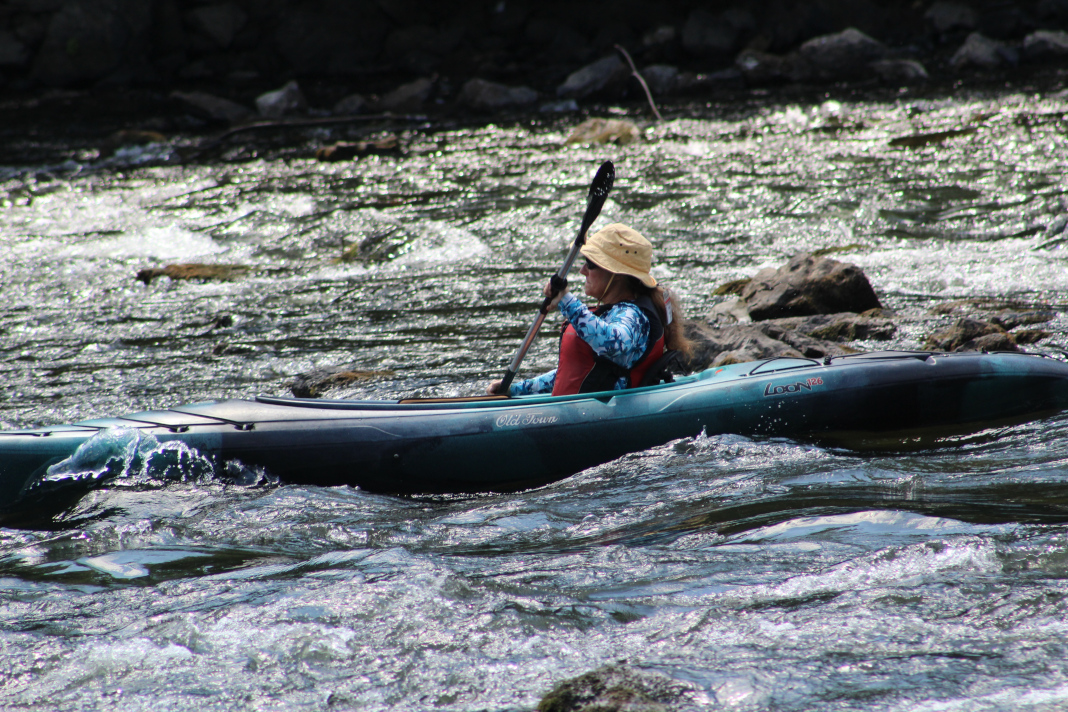
3. Tackle The Rapids At Kelly’s Lock
The Schuylkill River is littered with small riffles and mild whitewater along its course. However, at Kelly’s Lock, the froth turns up a notch at the class II+ Kelly’s Rapids.
After paddlers leave Jim Dietrich Park, they soon pass under Highway 222. Two miles after going under the highway, you’ll see the Kelly’s Lock Overlook and the entrance to one of the more challenging rapids on the Schuylkill, where the remnants of the stone dam built for a former canal system now creates a small maze of whitewater.
Paddlers who would like to skip the rapid can portage at the lock overlook, while those who haven’t had enough can hike up the path for another lap.
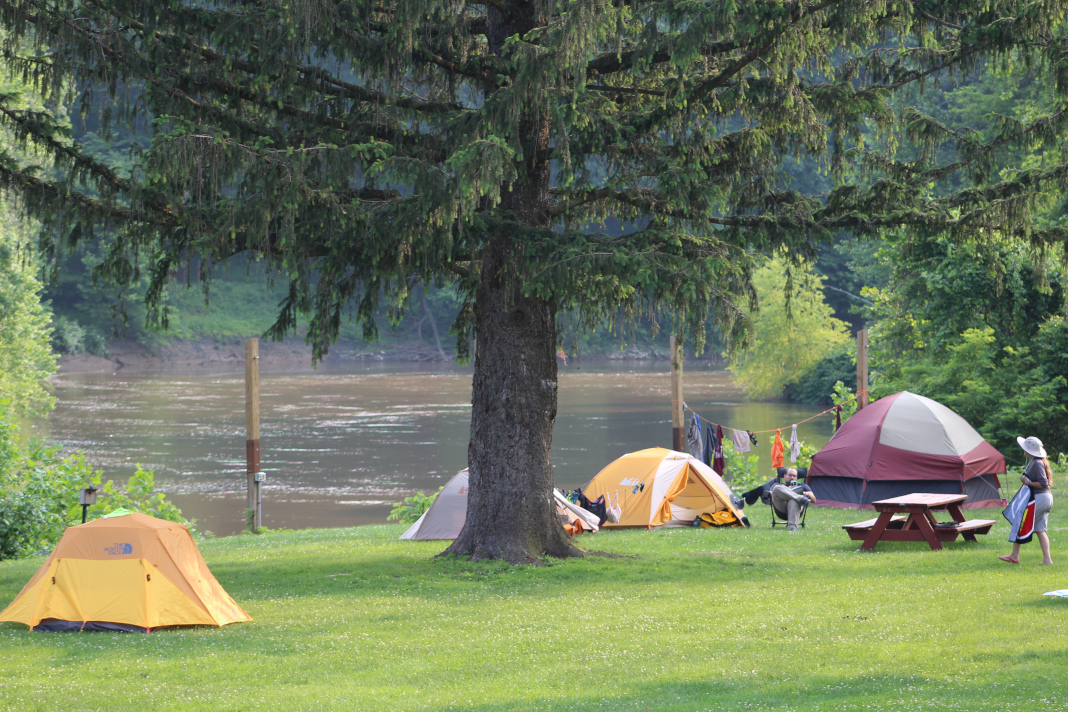
4. Discover Your Inner Daniel Boone As Your Drift Toward Pottstown
The Schuylkill Valley was much different in the 1700s, with dense forests crawling with wildlife and productive agricultural land. It’s also the place where a young frontiersman named Daniel Boone cut his teeth in the way of the woods to become the folk legend we recognize today.
Boone’s childhood homestead sits just a mile from the Schuylkill River, between Gibraltar and Pottstown. He lived there until he was 15. During that time, young Boone roamed the woods, learned to track game, and built the foundation of his abilities under the tutelage of local backwoodsmen and Native Americans.
As you drift through this section of the Schuylkill River, you can imagine a boyish Boone of the 18th century fishing along the river banks, with a life of legend ahead of him. Meanwhile you’ll be chronicling a river tale of your own on what was once known as the Pennsylvania frontier.
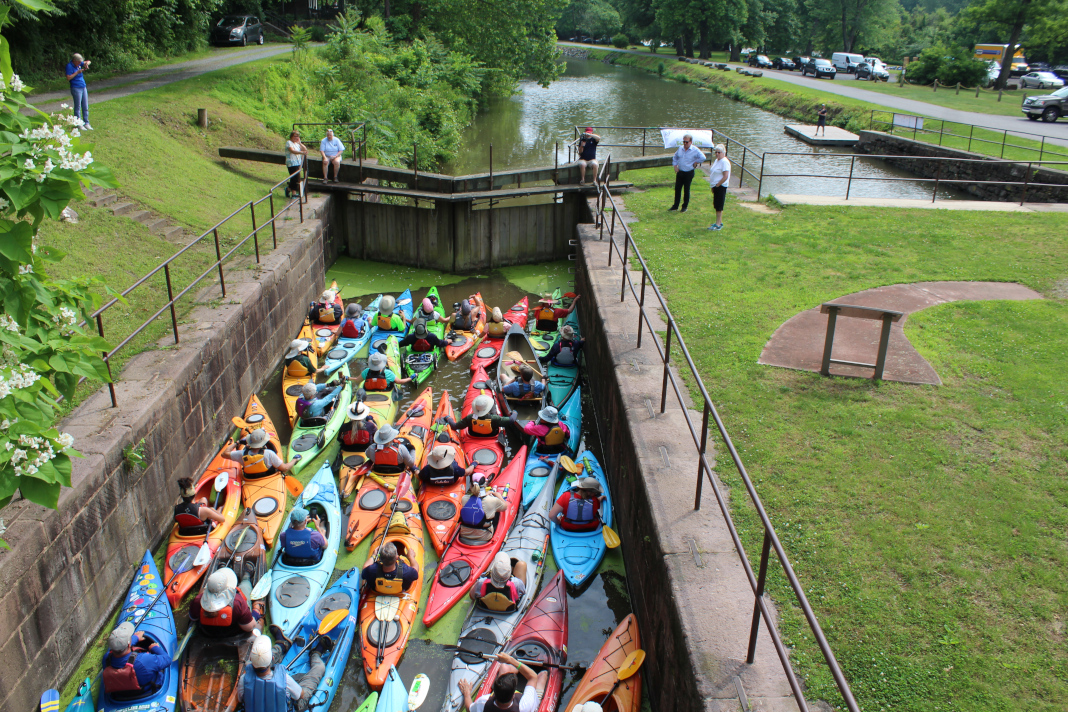
5. Navigate A Working Canal Lock At Mont Clare
The Schuylkill Canal once had 92 locks between the town of Port Carbon and Philadelphia. The locks allowed small barges to carry, you may have guessed, anthracite coal from Pennsylvania’s mountains to the port city of Philadelphia. The canal system is long gone, and Lock 60 at Mont Clare is the last remaining working lock on the Schuylkill River.
Any weekend you can watch volunteer lock tenders demonstrate how these engineering wonders were put to work in the 19th century. Paddlers on the Sojourn can even cruise through the past and enter the lock themselves, then paddle the two-mile flatwater stretch behind the lock, known as Oakes Reach Canal, before reentering the river.

6. Absorb A Pivotal Site In U.S. History At Valley Forge
In the winter of 1777, George Washington and 12,000 soldiers of the Continental Army marched onto a small plateau along the Schuylkill River. They built a significant encampment to dig in for the cold season. Then, with the help of officers like Baron von Steuben, Washington spent the winter of 1777-78 training his troops and molding a cohesive and coordinated army that would eventually defeat the British army to make the United States a sovereign nation.
The Schuylkill River Water Trail cuts right through the Valley Forge National Historical Park, and passes within 300 feet of the stone building that was Washington’s headquarters, the log cabins built by Continental soldiers and the parade fields that honed their skill.
7. Gaze At The Philadelphia Skyline From The Seat Of Your Boat
As the Schuylkill River winds close to the Delaware, it meets the staggering skyline of Philadelphia, and there is no better way to take in the view than from the seat of a canoe.
The Schuylkill enters Philadelphia passing by sites the Lenni Lenape held in high value for thousands of years. These are places where the Lenape names remain with only slight changes, like Manayunk and the mouth of Wissahickon Creek. The mouth of Wissahickon is also the home of the historic Philadelphia Canoe Club.
The Sojourn concludes at one of the most stunning and layered views on all of the Schuylkill, above the Fairmount Dam. Here the rowers known as the Schuylkill Navy launch their scull boats from the docks of century-old clubhouses on Boathouse Row. And toward the dam’s edge sits the Palladian architecture of the Fairmount Water Works, constructed in 1812. At the same time, rising behind it is the iconic Philadelphia Art Museum, all backed by the staggering skyline of Philadelphia, where the journey of the Schuylkill concludes.
The 2023 Schuylkill River Sojourn takes place June 17-23, 2023. Find more information on how you can attend and resources for recreating in the region at Schuylkill River Greenways.



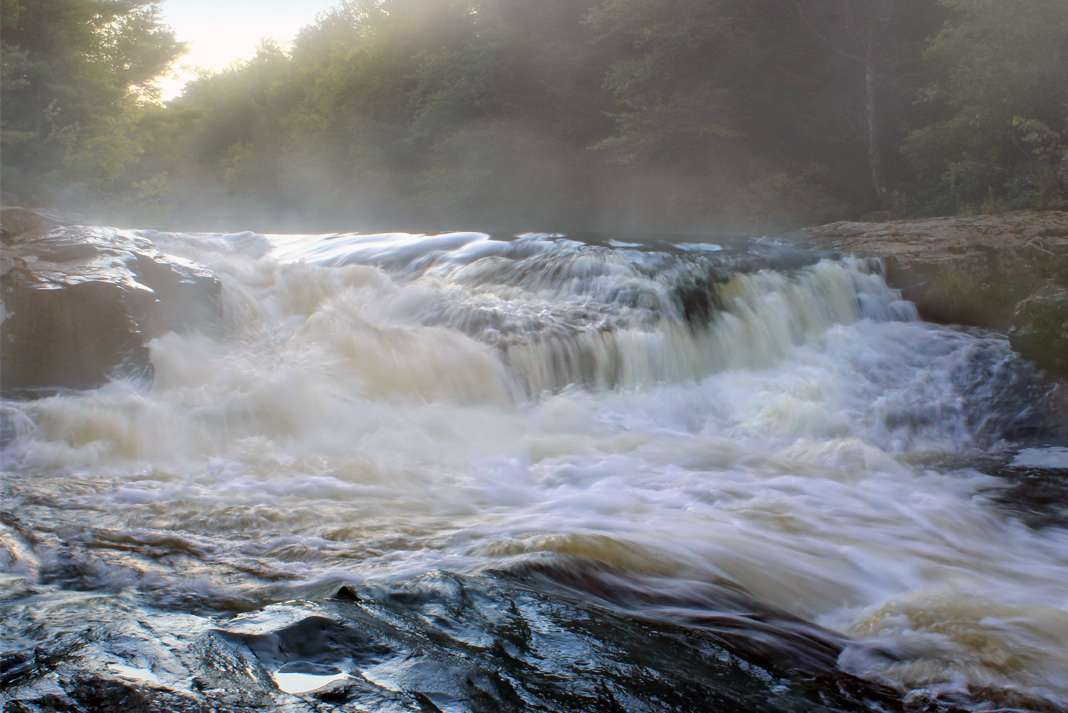






I did this sojourn in 2010 and highly recommend it!